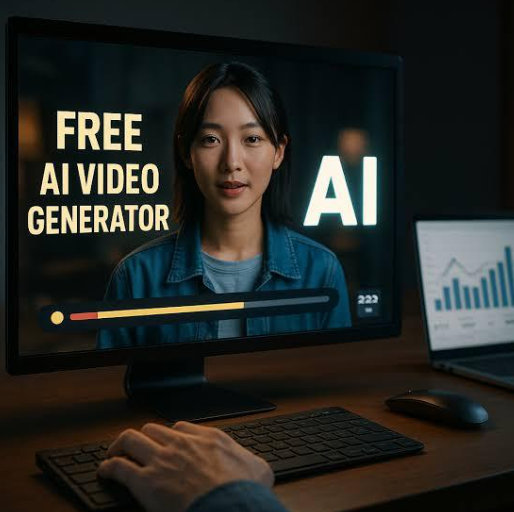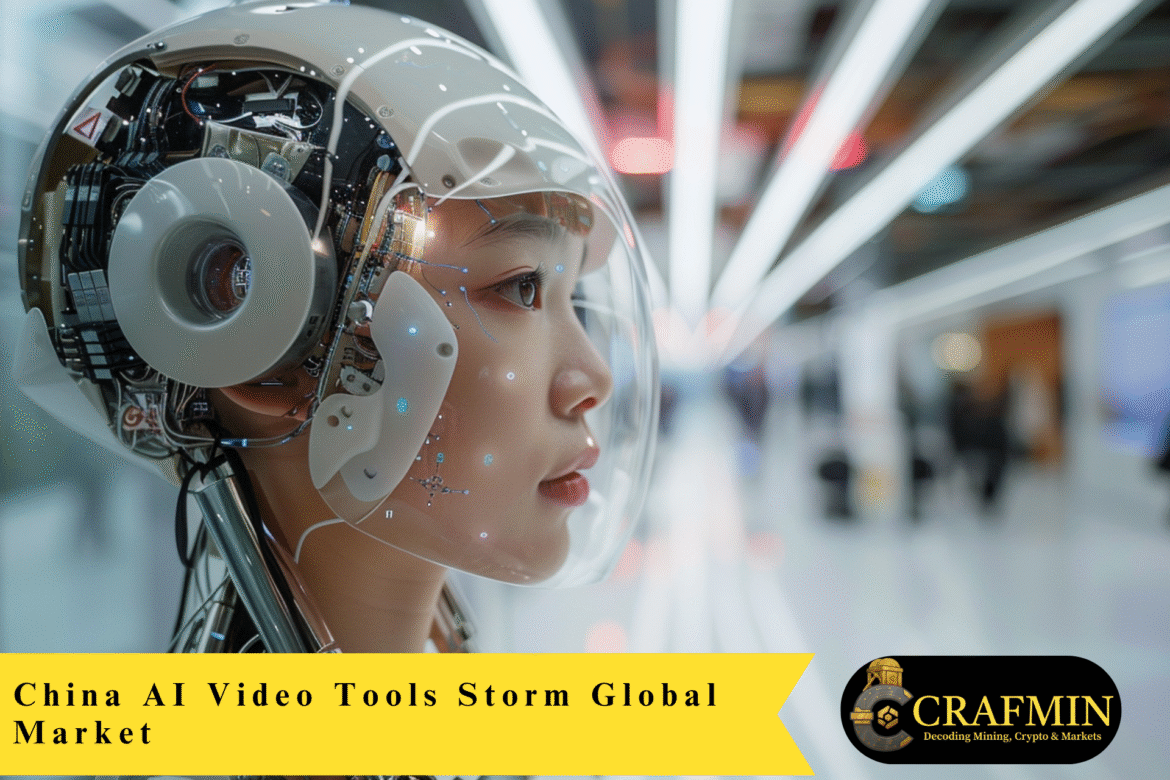China’s tech giants soon are rampaging the global generative video space. Kling AI, made by domestic TikTok competitor Kuaishou, earned more than $20 million on its text-to-video platform during the early 2025 quarter. Newly released Kling 2.1 now has cinematic modes and ready-to-use sound effects and is among the world’s top five video-AI platforms.
A great deal of Kling’s business is international, and over 70% of its pull is outside China. And that does not include shocking independent Chinese demand overseas, at a pace few Western companies can match.
While that is happening, Alibaba’s Wan 2.2 model is taking over the world. The more than 5.4 million times used video generative software open-source boasts high-end tone, angle, and light controls. Its technical ability and ease of use relative to its capabilities are releasing open creative tools potential.
Meanwhile, Baidu and Tencent are also broadcasting live shopping through AI avatars. In a stunning demo, Baidu virtual anchors earned $7.6 million for one broadcast watched by 13 million consumers, evidence that generative AI is no hype but yes, sellable technology.

Chinese Video Tech Takes Global Centre Stage ( Image Source: Medium )
Kling AI: From Local Launch to Global Leader
Its first to market in mid-2024, Kling AI has experienced over 20 successive updates. Its current incarnation, Kling 2.1, provides clean 1080p video, improved motion rendering and effects with sound richly sounding synthetic, and a full software suite of video-creation tools to professional and hobbyist videomakers alike.
To date, through March 2025, Kling’s annual top-line had been over US$100 million. During April and May, it was 100 million RMB in monthly subscription revenues. That’s not pilot adoption, that’s bulk adoption.
The platform makes it possible if there is a product which solves creativity problems somewhere out in the world with low entry barriers, then it is made possible. Kling makes it possible for creators, teachers, marketers, and mere mortals to experience a smooth, movie-like experience in the most desired medium.
Wan 2.2: Where Creativity Meets Code
Wan 2.2, developed by Alibaba, is one of the best-performing open-source cinematic video models to date. Mixture-of-Experts (MoE) model architecture divides workload into two subsystems: motion and general layout, and rendering details. Dividing workloads doesn’t cut quality in half.
The actual Wan 2.2 gem is freedom for art. Individuals have freedom from camera perspective to color via simple text input. Solo developers and artists can enjoy never having spent a single penny on costly hardware or ever feeling the need to be an expert.
Its popularity is the direction to follow. Already, since February when it came online, over 5.4 million times has been downloaded, seeing its use by a global market of creators looking for cheap, scalable alternatives.
BREAKING: China just launched the future of video creation.
This AI tool literally creates motion design for videos in seconds with just one prompt.
Here’s how it works (with real examples): pic.twitter.com/M65HVTwXqV
— Ryan Hart (@thisdudelikesAI) July 27, 2025
Baidu’s Digital Hosts Are Revolutionizing Livestream Shopping
China’s reign of generative video isn’t one-sided in terms of content, hundreds of millions have their routines turned on their head. The use of photoreal AI avatars by Baidu to enable real-time selling is likely the most revolutionary application in e-commerce.
In one of such six-hour live streams, virtual Luo Yonghao, a leading streamer, placed more than 130 purchases to 13 million consumers and generated $7.6 million revenues. AI avatars provide real-time, multi-language product showcasing with facial expressions and tone-of-voice changes most human-like to human hosts.
This is not innovation, it’s scalability, efficiency, and replicability of action. Brands no longer require human intelligence to power huge, high-quality live campaigns.
China’s competitive edge here is not technology, it’s strategy. Rather than buzz-driven, Chinese companies are creating something people can actually use. They’ve adopted the idea of making things accessible, open-source infrastructure, and applying them in real life.
Alibaba and Kuaishou are giving creatives what they want: control, speed, and affordance. Western solutions tie tools behind paywalls or backroom business deals, and Chinese tools are taking it abroad.
Such a strategy is accelerating innovation and greater marketplace presence across the globe.
The Real Impact on Businesspeople and Creators
For entrepreneurs, business owners, and creatives, such tools enable quality video production accessible to everyone. Kling AI makes movie-quality video creation accessible to everyone without involving post-production experts. Wan 2.2 brings director control to anyone with a vision and an internet connection.

Kling and Wan put pro-level content creation in anyone’s hands ( Image Source: Research leap )
Baidu’s AI avatars are proof of revenues that the technology is worth its commercial value. These apps aren’t merely prettier videos, arming up actual revenues, disrupting workflows, and creating new sales leads.
This convergence of commerce and imagination is reshaping virtual economies well beyond China.
What This Means for the Future of Content
We’re at a tipping point. Tools like Kling and Wan are transforming how content is made, who makes it, and what it looks like. Creators now have access to cinematic-grade production at their fingertips. Education, entertainment, advertising, and even virtual events will all be shaped by this new generation of tools.
As these platforms evolve, we’ll likely see more immersive storytelling, personalised experiences, and avatar-led commerce becoming mainstream.
Also Read: Europe Launches €20 Billion AI Gigafactory Project
Final Word
China’s video production industry is not only competitive, it’s booming. Kling AI and Wan 2.2 are showing that game-changing, budget-friendly, and profitable technology can come from anywhere in the world.
It’s not East versus West. It’s who is leading innovation in solutions, empowering creatives, and shaping the future of digital content.
Now the future is being called up in China and the world observes, downloads, and reaps the rewards.

